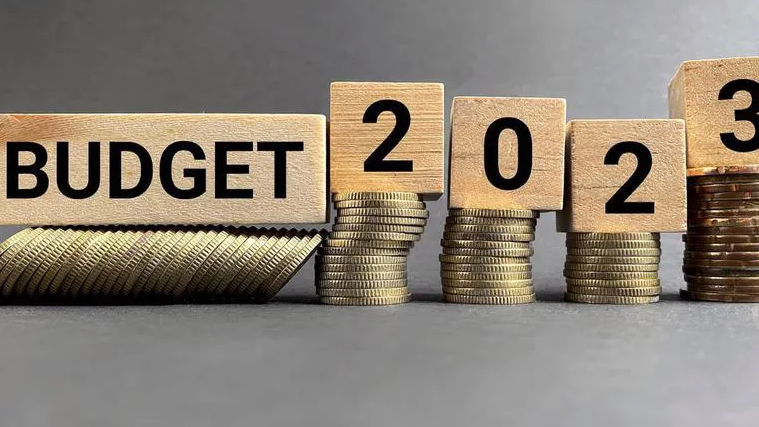AAMIR AHMAD TEELI & TAHIR NAZIR
In the absence of any vision document (e.g., 5 Year Plan) put out by the government, the annual budget is expected to provide direction to the country for achieving short term priorities of the government and policy makers. Good thing is that annual planning is yielding its fruits in terms of higher levels of growth, India’s economy rose from being the 10th largest in the world to becoming the fifth largest in the last nine years. This direction becomes more important when the economy is surrounded by global uncertainties and economically depressed neighbouring economies (Sri Lanka & Pakistan).
Amidst such economic environment, budget for financial year 2023-24 was presented by Finance Minister in the Parliament on 1st Feb. Every section of the country (Lower class, middle class, and upper class) keeps an eye on the budget every year with an expectation that there will be something advantageous in the budget for them. The budget was expected to be accompanied with some major policies to give the economy stability and prevent it from uncertainties (Global & neighbouring) and boost the domestic aggregate demand and economic growth.
The proposed expenditure for the financial year 2023-24 stands at 45.03 Lakh crore, a jump of 7.5% over the revised estimate of 2022-23. To meeting the gap between income and expenditure, centre will borrow a record Rs 15.43 Lakh crore from market through bond issuance. Market borrowing will be the major route to bridge the fiscal deficit of 11.81 lakh crore. Meaning deficit budgeting continues to be prevailing despite the slogan of Atmanirbhar Bharat. The budget can be mainly summed up under a few major goals and themes, such as, rural sector, social sector schemes, boosting infrastructure creation (improving physical and digital infrastructure) and the green energy and middle class tax relief.
Budget 2023 kept its focus on expanding Capital expenditure (Rs 10 lakh crore at 3.3% of GDP), showing government’s priorities for long term goals by building roads, highways and railway lines.The government stuck to the fiscal deficit roadmap in the Budget with a target of 5.9% in FY 24. Budget 2023 has increased the maximum permissible investment in the senior citizen savings scheme by doubling the maximum limit under the Senior Citizen Savings Scheme (SCSS) to Rs 30 lakh from Rs 15 lakh. The scheme offers assured interest of Rs 8 percent per annum. Defence ministry received the highest allocation among all ministries at Rs 5.94 lakh crore.
The Army has received an increase of 16.23 per cent, the Navy, 10.96 per cent and the Air Force, 2.79 per cent. There is a 48% rise in allocation towards renewable energy sector for year 2023.Budget 2023 reduced the tax burden for individuals opting for the new tax regime. Income tax relief for middle class where tax rebate has been increased from 5 lakh to 7 lakh annual income. The budget announced some major changes in income tax. Up to RS 7 lakh annual income no income tax will be levied. The number of tax slabs were reduced from 6 to 5.
What gets cheaper include Mobile phones, TVs, Lab grown Diamonds, shrimp feed, machinery for lithium ion batteries, raw material for EV industry. The items which will become costlier include Cigarettes with 14 % hike on tax, Silver, Compounded rubber, Imitation Jewellery, Articles made from gold bars, imported bicycles and toys, imported kitchen electric chimney, imported luxury cars and 14 % hike on tax on cigarettes.
Regarding the J&K UT budget, the projected spending for the fiscal year 2023-24 is Rs 35,581 crore. There has been a hike in revised estimates for the current financial year. The revised estimates for the Union Territory have been hiked to 44,538 rupees against budget estimates of 35,581 crore rupees. This distributional pattern of expenditures makes it abundantly evident that this budget’s main emphasis is on Capacity building, with a concentration on the growth of infrastructure and capital formation in particular.
Long-term goals have been taken into consideration when creating the budget. Although 5.9% is the objective for the fiscal deficit, it appears that this goal will be difficult to achieve keeping in view the tax relaxations given to middle class which will have an impact on the revenue collection. Budget seems populous with less focus on how the revenue collection can be balanced with expenditures. Higher capital expenditure can crowd in private investment thereby prove more fruitful in the direction of achieving sustainable growth in the future. The expectations are bright from the point of view of policy makers yet many sectors have been left unattended as such inequality, not much benefit for poor, unemployment, rising prices and many more.
(Aamir Ahmad Teeli is Research scholar of Economics at Central University of Tamil Nadu &Tahir Nazir is Research Scholar Economics at BGSBU Rajouri)










